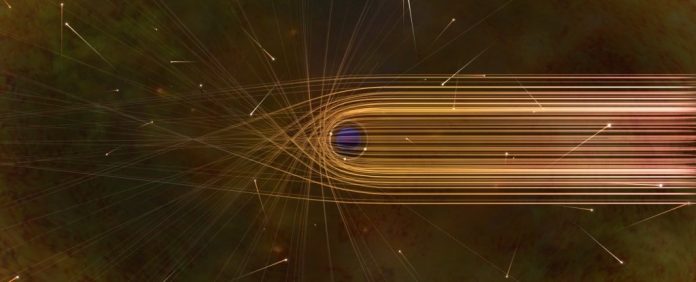Researchers revealed that the newly discovered black hole has a mass 70 times greater than the mass of the sun.
The discovery of the huge black hole named LB-1 by the Chinese-led team that discovered it has toppled that assumption.
Professor Jifeng Liu, who led the team at the Chinese Academy of Sciences, said in a statement:
Black holes of such mass should not even exist in our Galaxy, according to most of the current models of stellar evolution.
We thought that very massive stars with the chemical composition typical of our Galaxy must shed most of their gas in powerful stellar winds, as they approach the end of their life. Therefore, they should not leave behind such a massive remnant. LB-1 is twice as massive as what we thought possible. Now theorists will have to take up the challenge of explaining its formation.
LB-1 is located 15,000 light-years from Earth and the researchers have likened the search for it ‘like looking for the proverbial needle in a haystack: only one star in a thousand may be circling a black hole’.
The researchers explained that until a few years ago, stellar black holes could only be discovered when they gobbled up gas from a companion star. ‘This process creates powerful X-ray emissions, detectable from Earth, that reveal the presence of the collapsed object.’
They added:
The vast majority of stellar black holes in our Galaxy are not engaged in a cosmic banquet, though, and thus don’t emit revealing X-rays. As a result, only about two dozen Galactic stellar black holes have been well identified and measured.
Following the initial discovery, the world’s largest optical telescopes (Spain’s 10.4-m Gran Telescopio Canarias and the United States’ 10-m Keck I) were used to determine the systems physical parameters. They discovered a star eight times heavier than the Sun orbiting a 70-solar-mass black hole, every 79 days.
LIGO Director Prof. David Reitze from the University of Florida said:
This discovery forces us to re-examine our models of how stellar-mass black holes form.
This remarkable result along with the LIGO-Virgo detections of binary black hole collisions during the past four years really points towards a renaissance in our understanding of black hole astrophysics.















